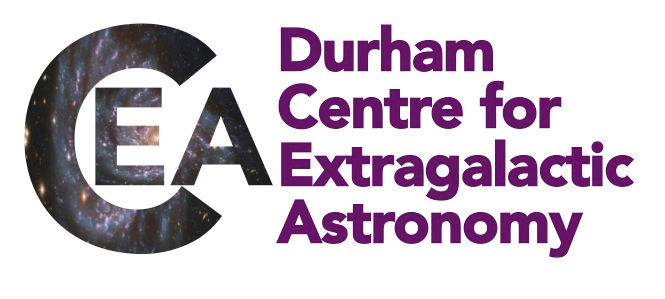CEA News, December 2019
Disks spin faster - measurements of the morphology and dynamics of distant galaxies with KMOS
Astronomers at the CEA have recentently published new work uncovering the dynamical state of distant galaxies using the K-band Multi-Object Spectrograph (KMOS) on the Very Large Telescope in Northern Chile. The observations were taken as part of the guaranteed time observations (i.e. access given on the telescope in return for Durham's contribution to the development of the instrument) and provide detailed observations of the motion of material within a sample of approximately 300 star- forming galaxies in the effective middle ages of the Universe (i.e. at redshifts of z=1.5).

Whilst galaxies predominantly emit light produced directly by the stars they contain, star-forming galaxies also produce significant quantities of light from the gas that surrounds the stars. Whilst the hot outer regions of stars emit a continuum of light, the ambient gas primarily emits distinct emission lines at discrete wavelengths of light. By studying the spatial distribution of such emission lines (and hence the ambient galactic gas) in distant galaxies, astronomers are able to measure the dynamics (e.g. size, rotation speed and angular momentum) of distant galaxies. It is these emission lines that are detected using the KMOS observations. In this study, these have been complemented by high-resolution observations of the continuum emitted by the stars themselves, using the Hubble Space Telescope (HST).
The authors compare the angular momentum of the galaxies' gas (measured from the KMOS observations) to the estimated mass contained within their stars for galaxies covering a range of different morphologies (or shapes, as measured from the high resolution HST images). This is illustrated in the figure shown here, where images of the different types of galaxies are shown as a function of the galaxies' angular momentum and stellar mass. The simple spherical systems can be seen to have lower angular momentum than the more complex disk and irregularly shaped galaxies (i.e. a higher fraction of material is spinning faster in disky and irregular systems than in the spherical or elliptical systems).
Such observations, at an epoch when a significant chunk of the Universe's stars formed, corroborate what we see at the present day, such that disky and other complex shaped galaxies are the more dynamic places, both spinning faster and containing higher fractions of gas with which to form new stars.

